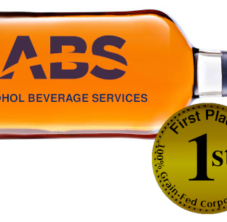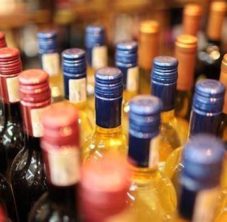This is part 2 in a 4 part series debunking the excuses ABS uses to justify its existence, identify who benefits from this monopoly, and what (if anything) can be done to dismantle it. You can read part 1 here.
The county’s Alcoholic Beverage Service justifies its corporate monopoly in the following video.
Viewing with a critical eye, you can see that every single sentence in this video’s script is either a) false or b) taken so far out of context that predicting BCC High School will win the county’s swimming championship is closer to the truth.
ABS gives more detailed justifications for it’s corporate monopoly in its outdated page Local Liquor Control, It Just Makes Sense. Let’s go through those justifications.
ABS provides $30 million in annual profits that funds schools & roads, keeps taxes down
If you’ve been hanging around Clean Slate MoCo for a while, or if you’ve received your property tax bill recently, you know full well that the ABS did not prevent a 4% increase in property taxes for no increase in services.
Even more ridiculous, Montgomery County’s operating budget alone (which does not include capital expenditures) is now $6.8 billion for 2024. Alcoholic Beverage Services claims that it generates $30 million profit returned to the county (closer to $35 million this year). That amounts to only 0.5% of the county’s operating budget. If the ABS would completely disappear, its annual contribution of $30 million will not be missed.
Upon its dissolution, the net loss to the county revenue will not be $30 million. The Department of Liquor Control will issue licenses to those retailers who are interested in selling liquor. During 2024 Prince George’s County expects to realize $3.5 million from liquor licensing fees.
No “liquor stores on every corner”
The threat of liquor stores on every corner, should the county monopoly be repealed, is preposterous.
Gun stores are not on every corner, neither are stores selling cigarettes, neither are bars, neither are medical marijuana dispensaries. The County Council takes the matters of alcohol, firearms, cannabis, and tobacco very seriously. Already the council has enacted legislation that prevents vaping stores from opening within one-half mile of a middle or high school.
Currently there are 304 beer and wine licensees in Montgomery County. A map of them is available at Map of Department of Liquor Control Licensees. There is nowhere near a licensee on every corner. If that’s the case with privately owned beer and wine stores, the same will be true of liquor stores.
We see from these many examples that we don’t need the county’s liquor monopoly to prevent a proliferation of liquor stores. The Department of Liquor Control, and the County Council itself, already prevents that from happening.
Stronger protections against underage drinking
ABS claims that its monopoly provides protections against underage drinking.
The CDC has a WONDER database from which researchers can extract all sort of data. I looked up deaths due to use of alcohol for the underage group 10–19 for the years 2018–2021. Here is how ABS’s protections for Montgomery County compares to Maryland’s other counties.
The CDC reports zero deaths throughout all of Maryland for this query. Admittedly all the results were termed “Unreliable,” because less than 20 deaths were reported in each year. That is one indication that MoCo, even with its outsized population, has no significantly higher underage alcohol-related death rate compared to the other counties.
A more direct correlation between underage drinking and the liquor monopoly appears in a report Maryland Compendium of Cross County Indicators on Underage Drinking, November 2008, issued jointly by the Maryland Alcohol and Drug Abuse Administration and the University of Maryland’s Center for Substance Abuse Research. Table 1 of that report, “Maryland Residents Aged 12 to 17 Years with Past Year Alcohol Dependence or Abuse, by Maryland Substate Region, Annual Averages Based on 2004, 2005, and 2006 Surveys,” is summarized below.
| Substate Region | Estimate (%) |
| Anne Arundel | 5.03% |
| Baltimore City | 3.66% |
| Baltimore County | 5.01% |
| Montgomery | 5.76% |
| North Central | 7.77% |
| Northeast | 6.44% |
| Prince George’s | 3.25% |
| South | 4.49% |
| West | 5.81% |
| Maryland | 5.06% |
The astonishing finding in this report is that underage drinking as a percentage of the population aged 12–17 was higher in Montgomery County than in Maryland overall! Clearly the liquor monopoly is not doing anything to prevent this scourge, and for all we know it may be contributing to it!
Honestly, I’m not satisfied with the data sets I’ve used, so I don’t feel confident that my hypothesis, that the ABS contributes nothing toward reduced underage drinking, isn’t adequately supported. Similarly, the various reports the ABS quotes are equally unconvincing. The fact that marijuana stores are privately owned seems to indicate that there is no fear of excessive underage cannabis consumption, so presumably the same is true of privately owned liquor stores.
Better control protects public health – Centers for Disease Control
Indeed, the CDC does recommend against privatization of alcohol sales in jurisdictions that are already monopolized, because of a barely supported claim that privatization increases consumption, and consumption is a proxy for abuse. In response, plenty of empirical evidence indicates that privatization has no or negative impact on consumption. At the end of the day, alcoholism is a disease and a function of culture, and the ABS can do precious little about that.





